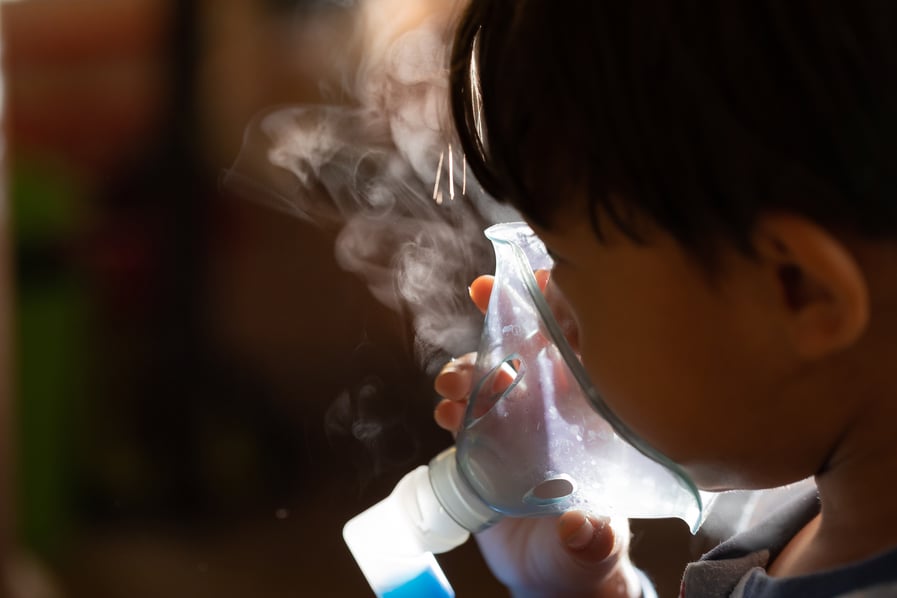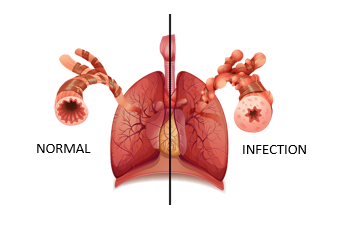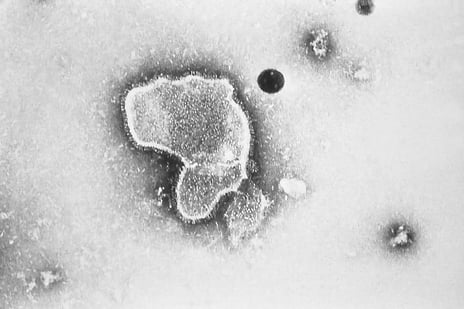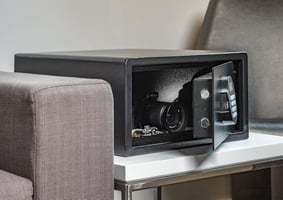Bronchiolitis: how to protect children?

Hospitalisations for bronchiolitis have continued to skyrocket for the third week in a row. Bronchiolitis is responsible for half the hospitalisations of children under two years old in France, where all regions are on high alert. How do people catch it? What are the aggravating factors? Is there a link to air quality? What can people do to avoid catching it. Here is some key information from JVD’s teams to help you understand.
Bronchiolitis, what is it?  Bronchiolitis is a viral respiratory infection that primarily affects young children (under 2 years old). It causes inflammation and excessive secretions (mucus), which obstruct the bronchioles (small branches of the lungs).
Bronchiolitis is a viral respiratory infection that primarily affects young children (under 2 years old). It causes inflammation and excessive secretions (mucus), which obstruct the bronchioles (small branches of the lungs).
Transmission
The infection is mainly transmitted by airborne particles through coughing and sneezing. It can also be transmitted by contact, such as kisses and children putting objects in their mouths. Children then have difficulty coughing, which can lead to a secondary infection and hospitalisation in serious cases.
460 000 children affected every year - Air pollution fosters bronchial tube inflammation and enables the virus to move deeper into the airways. Therefore it is important to reduce children’s exposure to air pollution and contaminants.
Understanding this virus

The virus is a respiratory syncytial virus (RSV), which is also known as a human respiratory syncytial virus (hRSV) or human orthopneumovirus. It was discovered in 1956 in a chimpanzee with a cold by Professor Morris.
This virus has an RNA viral envelope. Enveloped viruses have a plasma membrane that holds the key surface receptors enabling the viral infection of host cells. By destroying the envelope and/or surface receptors, the virus’s ability to infect is completely nullified.
Enveloped viruses are considered to be fragile and sensitive to variations in environmental factors. They belong to the same group as influenza and measles.
Their size ranges from 120 to 300 nm, meaning they can be found in aerosols and ultrafine water droplets in the air (0.1 µm to 0.3 µm). They can survive around 15 minutes in the air or 6-8 hours on objects. This makes their survival time shorter than that of COVID, for example.
Prevention is better than cure: best practices
We must do whatever it takes to reduce children’s exposure to the virus. Since it is mostly airborne, we must:
- Avoid exposing children under three months old to childcare settings.
- Take preventative measures and clean toys.
- Treat the air to reduce its overall microbial load.
Introduce fresh air into spaces during peak occupancy times.
Getting an air purifier - choosing the right one and the right place

ACHIEVED STANDARDS GUARANTEE PERFORMANCE
- EN 1822 specifies your appliance’s filtration (minimum H13)
- NF B44-200 monitors your appliance’s ONE PASS micro-organism removal performance.
Our Shield’s air purifiers meet these two standards and provide a level of performance that reduces the risk of children’s exposure to this type of virus.
PRIORITY SITES
While adults and teenagers can handle the virus, young children are much more affected by it. This means that the priority air purifier sites are:
- Day nurseries and other childcare centres where the risk of contamination is ever-present (nappy changing areas, parent reception area, play areas, etc.).
- In homes: children’s living spaces such as the lounge and dining room
How to use the Shield?
-
BOOST mode morning and night, and during peak occupancy times or when risk symptoms are noticed (for instance, an adult coughing).
-
CONTINUOUS mode to reduce exposure due to the room’s viral load.
This protocol does not replace the requirement to implement standard protective measures and wash hands upon entering the establishment (hand sanitiser stations, surface/item cleaning, etc.).




Laissez un commentaire